R.P. Aditya
Shared posts
Niklaus Wirth, Visionary Software Architect, Dies at 89
Study of Patients With a Chronic Fatigue Condition May Offer Clues to Long Covid
Braving the Winter to Visit a Valley Shrouded in Snow and Secrets
He Had Severe Heartburn. Could His Trouble With Balance Be Related?
A Two-Ton Lifeguard That Saved a Young Pup
Gödel, Escher, Bach is the most influential book in my life (2022)
Article URL: https://philosophygeek.medium.com/why-g%C3%B6del-escher-bach-is-the-most-influential-book-in-my-life-49d785a4e428
Comments URL: https://news.ycombinator.com/item?id=39253099
Points: 380
# Comments: 307
Why Some Therapists Are Taking Their Clients Outdoors
Touring Ghana’s Growing Arts Scene
Why Do Women Have More Autoimmune Diseases? Study Points to X Chromosome
Make Money Decisions Like You’re 70

I walked into a tattoo shop down the street to get my first tattoo. It was going to say memento mori. In latin: “Remember you will die.” It’d be a permanent reminder that time is precious.
Nobody working in the shop says anything to me. I sit down and start leafing through those books of ready-made tattoos.
Tattoo machines are buzzing away in the background, laying down lines of permanent ink, and...
Arno A. Penzias, 90, Dies; Nobel Physicist Confirmed Big Bang Theory
Reggae Squash
A first for me this week…
Played a ladder match against a new club member last night. As we’re warming-up, I noticed a pretty strong cannabis odor. I asked him if he smelled it, and he replied, “Oh, sorry, man. I just smoked a joint in my car.”
He then proceeded to play positively inspired squash, putting not one foot wrong, and whipping my ass 3:1. The retrievals were particularly insane—Court Sprints ‘R Us from front to back. All the while, super-smiley & chatty. My most enjoyable skinning in recent memory.
The best part: Between games 1 & 2, he pulled a little bag of Doritos from his racquet bag and mowed it down. 😂 Play long enough and you see everything, I suppose.
Anyone have experience with this? How it’s even possible is truly beyond me. If I smoke, all I want to do is read Wikipedia.
Edit: For any juniors reading this, please note that this is NOT a pro-drug post. The better question is, "How can someone play squash while experiencing the psychotropic effects of cannabis?" The answer (supplied by those with THC tolerances sufficiently high to nullify these effects) is simply, "They can't."
[link] [comments]
Free Bus Passes Are Giving Indian Women More Financial Freedom
C. Parvati was born and raised in Bangalore, but she never had the opportunity to visit the temples and tourist sites because she could not afford to spend money on such recreational activities. “Now, I am able to take my children and show them these places even within my budget when school has holidays,” says Parvati.
What changed? She’s been able to save money since the Karnataka state government made public transportation free for women in June.
Karnataka is one of several Indian states that have recently implemented a free bus pass for women. The initiative is called Shakti, which in Hindi means “strength.” In 2019, Delhi was the first place in the country to provide women with complimentary tickets printed on pink paper, and earlier this year, the state administration reported that more than one billion have been used thus far. Other states that have launched similar programs include Tamil Nadu, Punjab and Telangana.
The purpose of such policies is to bring more women into the workforce by lowering the cost and simplifying the process of working and traveling. According to the World Bank, India has one of the lowest rates of female labor participation in the world, with less than 25 percent of women over the age of 15 employed as of 2022, a decrease from 27 percent in 2012. In India, men frequently restrict the financial options available to women. And although these same men may object to their wives working outside the home, free travel gives women a choice that they did not have previously. Though women are free to work, if their commute is too expensive or unpredictable, they frequently choose not to. The governments that have put the program into place say that it has been successful and they intend to extend it.
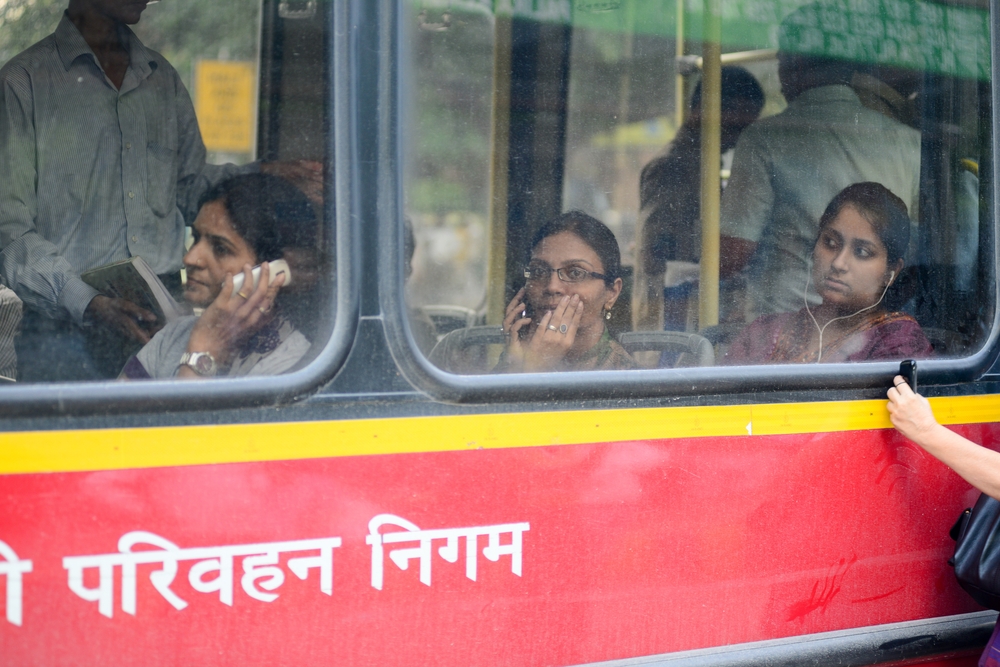
Often, marginalized women are those who have to work every day to feed their families, and are pressed for time with cooking, household chores and helping with elderly family members. Taking the bus helps them to save time and be efficient in their work. Without the bus, these women would walk on average three to five kilometers a day, which can cut down their annual earnings by up to a quarter.
“The convenience of the free bus saves them time and helps them in earning a double income,” says Tara Krishnaswamy, the co-founder of the non-governmental organization Political Shakti. Apart from saving money on their travel, the women are also able to take up extra work in the time they save, allowing them to earn more. According to Krishnaswamy, most of the marginalized women across the country depend on rations, a subsidized food program providing mostly rice and few necessities. The money the free bus rides save these women helps them buy nutritious food — like fruits, eggs or milk for their children — that is otherwise out of their reach.
Crushed by negative news?
Sign up for the Reasons to be Cheerful newsletter.Vinay Sreenivasa, a member of the Bangalore Bus Commuters’ Forum, says the group has been pushing for the free bus ride program for two years. “We believe that employment and educational opportunities for women are hurt because of the unavailability of affordable transport, doing this will also put more women in the public life in the economy,” says Sreenivasa.
The number of people utilizing public transport has increased, as has the revenue of all four road transport corporations (RTCs) in Karnataka, thanks to the Shakti project. Ridership and the transport department’s revenue both increased following the introduction of this system. In the six months after the program’s launch, 6.2 million women in Karnataka — which includes the city of Bangalore — have taken advantage of it and saved a significant sum of money. By allowing women to achieve goals that were previously unattainable, the free bus fares boost the economy, contributing to spending that helps local businesses and even the tax system.
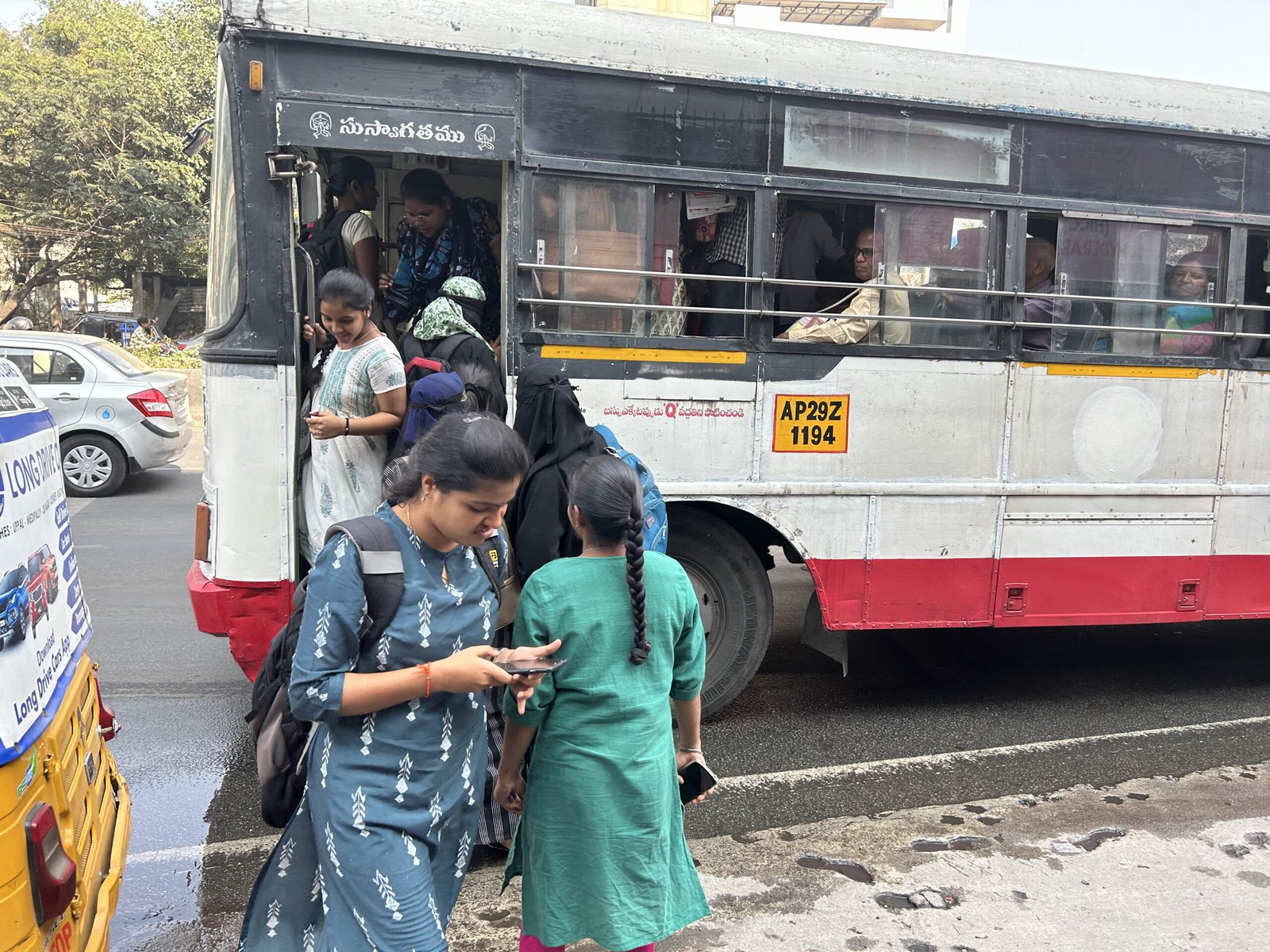
The initiatives in Telangana and Karnataka, which encourage women to apply for smart cards, could serve as a way to gather important data and could eventually develop into a national common mobility card. But since getting a smart card requires paperwork, this excludes marginalized women who may not be documented. Another state, Tamil Nadu, has eliminated this obstacle. Its plan involves no paperwork, and is straightforward and simple to apply, making it accessible to all women.
P. Yashoda, who works with the domestic workers union in Bangalore, feels that though the program there is helping them save on money and time, it has its limitations. “I have faced many situations when the conductor is rude to me and my male co-passengers question me about why this scheme is applicable only to women, when they’re also paying taxes,” says Yashoda. “This sort of disrespect and behavior is very unfortunate.” At the same time the program is drawing criticism from taxi and auto drivers, who have gone on strike in some cases over their fear of losing passengers.
Freedom of mobility is a fundamental right in India, and this initiative enables women to exercise that right. “The biggest and most important takeaway from this scheme for women is dignity, which earlier they didn’t have and were forced to ask their husbands for money to travel by bus. This initiative is helping them build their self-confidence and give them the dignity that they deserve,” says Krishnaswamy. Several sectors of society, including women’s advocacy organizations, transportation specialists and regular people, have applauded the initiative. It represents a forward-thinking move toward the creation of a more equal and inclusive society where women can use public services without restriction.


Become a sustaining member today!
Join the Reasons to be Cheerful community by supporting our nonprofit publication and giving what you can.
JoinThis initiative is giving women the economic empowerment to do things for themselves that they always wanted to do but never did, as they always gave priority to others’ needs over their own. “Earlier when I had to travel to my village Narsampeta, in Telangana, it cost me Rs.1400 [about $17 US] per trip,” says Pallekonda Saroja, a domestic worker from Hyderabad. “Now I can buy something for myself by saving this amount.” Saroja’s daughter-in-law, Usha Rani, who works as a nurse in Hyderabad, commutes by bus daily, so she is happy about the introduction of this initiative in Hyderabad. “I can put aside the money I save for my kid’s higher education,” says a smiling Rani.
In addition to its material advantages, the Shakti plan has had a significant social influence. It opposes conventional gender norms and advances gender equality as well as women’s engagement in public life. Women’s growing visibility on public transportation is an important step towards normalizing women’s presence in all sectors of society. Many women say that the program gives them a sense of security when they travel. The program’s goal of increasing the number of women on buses fosters a safe atmosphere that lowers the risk of harassment. And in a patriarchal society like India, it’s giving women the financial ability to dream for their children’s bright future and to actually do something for their own benefit.
“I took the bus along with my friend today to run some errands. I was so happy, as this saved me Rs.100 and this means a lot to me,” says Uma Maheshwari, a housewife from Hyderabad, Telangana. “Now I can save more and buy something for my home.”
The post Free Bus Passes Are Giving Indian Women More Financial Freedom appeared first on Reasons to be Cheerful.
Shorts for January
-
I made a graph of polling data in Finland on support for joining NATO from 1998 up through Finland joining NATO in April 2023.
(Insert witticism about correlation and causation.)
-
In September 1893, Churchill was admitted, on his third attempt, to the Sandhurst military college. He wrote to his father, “I was so glad to be able to send you the good news on Thursday.” His father, a former Chancellor of the Exchequer and leader of the House of Commons, wrote back a week later. The full text the reply doesn’t seem to be available, but we have these glimpses:
You should be ashamed of your slovenly, happy-go-lucky, harum, scarum style of work. […] Never have I received a really good report of your conduct from any headmaster or tutor. […] Always behind, incessant complaints of a total want of application to your work. […] You have failed to get into the 60th Rifles, the finest regiment in the army. […] You have imposed on me an extra charge of some 200 pounds a year.
[…]
Do not think that I am going to take the trouble of writing you long letters after every failure you commit and undergo. […] I no longer attach the slightest weight to anything you may say. […] If you cannot prevent yourself from leading the idle, useless, unprofitable life you have had during your school days, […] you will become a mere social wastrel, one of the hundreds of public school failures, and you will degenerate into a shabby, unhappy and futile existence. […] You will have to bear all the blame for such misfortunes.
[…]
Your mother sends her love.
Churchill was 19.
-
In May 1968, far-left student protests in Paris sparked a period of civil unrest across France. The recorded graffiti (also in French) is like a glimpse into a secret 1968 proto-Twitter. Some favorites:
I suspect God of being a leftist intellectual.
The student’s susceptibility to recruitment as a militant for any cause is a sufficient demonstration of his real impotence.
You will end up dying of comfort.
SEX: It’s okay, says Mao, as long as you don’t do it too often.
People who work get bored when they don’t work. People who don’t work never get bored.
Down with the abstract, long live the ephemeral.
Art is dead, don’t consume its corpse.
When the last sociologist has been hung with the guts of the last bureaucrat, will we still have “problems”?
A cop sleeps inside each one of us. We must kill him.
Please leave the Communist Party as clean on leaving it as you would like to find it on entering.
- Apparently, these students were greatly influenced by Situationism:
In their expanded interpretation of Marxist theory, the situationists asserted that the misery of social alienation and commodity fetishism were no longer limited to the fundamental components of capitalist society, but had now in advanced capitalism spread themselves to every aspect of life and culture. They rejected the idea that advanced capitalism’s apparent successes—such as technological advancement, increased productive capacity, and a raised general quality of life when compared to previous systems, such as feudalism—could ever outweigh the social dysfunction and degradation of everyday life that it simultaneously inflicted.
-
You might have read my attempt (Asterisk magazine version) to reconstruct how the NIH started a $100 million randomized trial on the health impact of moderate drinking and then cancelled it after coordination with the alcohol industry was revealed. Since we aren’t getting that trial any time soon, Congress recently asked the National Academies to get a group of experts together to summarize the imperfect evidence we do have. That group included… the lead investigator of the cancelled trial, the same guy that spent years planning the trail with the alcohol industry and then claimed he had no idea that the alcohol industry was involved at all. After the New York Times reported on his “provisional appointment”, he was removed from the group within an hour.
-
Here are the number of spite houses in different countries that are mentioned on the spite house Wikipedia page:
Country # spite houses Iraq 1 England 1 Canada 1 Bosnia 1 Argentina 1 Lebanon 1 United States 19 And inside the US:
State # spite houses Connecticut 1 Maine 1 Maryland 1 Nevada 1 Virginia 1 Washington 1 California 2 Kansas 2 New York 4 Massachusetts 5 -
The American Department of Defense recently did an analysis of 17-24 year olds and found that 77 percent were unqualified to serve in the military, due mostly to obesity, drug abuse, physical health, or mental health. Almost half were disqualified for more than one of those reasons:
So that seems concerning, for multiple reasons. But looking into it, maybe it’s not as bad as it seems?
-
35% were disqualified for being overweight. But the limit for the army (for men) is 20% body fat which is reasonably strict.
-
24% were disqualified for “drug abuse”. But that—in theory—includes anyone who has ever used marijuana.
-
-
Also, the Department of Defense combines these criteria with a network of military recruiters. If you want to join the army, your recruiter will help you diet and maybe dehydrate yourself to meet the weight limit. They will also, by all accounts, give you an off-the-books drug test and if you fail, will give you some tips and tell you to come back later. They will also make it very obvious that when you’re asked if you’ve ever used marijuana, you are expected to lie. It’s cute when the government has little battles with itself like this.
-
If you haven’t seen it before, the 2008 Pepsi BREATHTAKING Design Strategy is really something.
That’s page 6. There are 21 more. Savor them. After each page, ask yourself if things could become more ridiculous. (They can.) It’s beyond parody.
Really, it’s too good—I thought it had to be some kind of stunt. But I can’t find any evidence, and the company responsible went out of business in 2013.
-
I recently had a visionary idea: (1) bad air is bad for you (2) so we should monitor local air quality (3) but that’s mildly annoying (4) so we don’t do it (5) so why not make a service where you enter your location and get an email if PM2.5 goes above some threshold and thereby add some free DALYs to the universe?
The answer, in the US at least, is that this is a free service the government already provides. Consider signing up, it’s easy.

-
Here’s a cautionary tale from someone who caught my obsession with air quality and built a Cuboid.
I built the cuboid and used it for about a year. I just replaced the filters. It worked well. Life was good.
Then the horrendous air quality hit Milwaukee a couple weeks ago. It was some of the worst in the world. Even with cuboid going plus two small Levoit filters, our PMI 2.5 levels in our one bedroom apartment stayed in the unhealthy range indoors. (I use this device for measurements)
The thing that instantly knocked the levels down to “moderate” (a PMI 2.5 level of around 25 if I recall) was turning on our 2 year old Coway Airmega AP-1512HH, one of the fancy brand name air filters that Scott2 mentioned above. It’s the type of machine that Dynomight would probably scoff at me for owning.
The filters in the Coway were over a year old, so I wasn’t sure how effective it would be. We hadn’t used it up to that point because DW thought it had been giving off a weird odor. But we were desperate, so I cleaned the filters and let it rip. Then I watched in amazement as the air quality rapidly improved. This thing worked like a beast. If my measuring device is to be trusted, it was more effective than my all my other air filters combined.
I feel kind of silly for going all in on the cuboid, and for telling many people about how great it was. Don’t get me wrong, it definitely works. It’s just not in the same league as the fancy unit we owned. Sometimes the giant corporations with their R&D departments, their decades of experience, and their highly paid engineers really can make a better product than an overconfident outsider with no domain expertise. Who would have thunk it.
This is a good story, but a couple notes: (1) If you go by the listed clean air delivery rates, the Coway purifier should do more than all the other purifiers combined (at higher cost). (2) There’s nothing wrong with commercial air purifiers! I just think it’s weird that manufacturers don’t provide more evidence that their products actually work, given that they’re borderline unregulated and tests suggest some don’t work as advertised. (Also I don’t scoff that much.)
-
The Tunnel of Eupalinos: Around 2500 years ago, the Greek city-state of Samos wanted a water source that couldn’t be cut off by invading armies. So they dug a 1 km aqueduct from a spring through a mountain and hid it so no one would know it was there. It worked for 1100 years before filling up with silt, and eventually was forgotten and lost. Then, in the 1800s, people noticed this passage in Herodotus:
The Samians […] are responsible for […] a tunnel nearly a mile long, eight feet wide and eight feet high, driven clean through the base of a hill nine hundred feet in height. The whole length of it carries a second cutting thirty feet deep and three broad, along which water from an abundant source is led through pipes into the town.
And they thought, “Huh. Maybe that’s real? Maybe we can find it?” So they looked, and found the spring in 1853. They started clearing the tunnel in 1882 with the idea of bringing it back into use (!) but eventually decided that wasn’t practical. The tunnel was finally excavated in 1973.
-
So how do you build a 1 km tunnel through solid rock 2500 years ago when no one else has ever done that before? Seemingly like this:
-
The spring is 52 m above sea level on the other side of a mountain. Excavate a large underground reservoir next to it and cover it with large stone slabs supported by stone pillars.
-
Physically mark out a straight line over the top of the mountain. Using sightings, locate two starting points on opposite sides of the mountain. Make sure they are at the same elevation by creating a level path between them around the side of the mountain.
-
Dig a single-man sided hole on each side of the mountain by forcing prisoners to remove 12-15 cm of rock per day. Again use sightings to make sure the tunnels are headed towards each other in the horizontal plane and use gravity to keep both tunnels level. Where necessary, jam stone slabs into each other over the tunnel to protect from rockfall. This takes around 8 years.
-
When the tunnels are nearby, cleverly bend the paths to make sure they meet in the horizontal plane and expand them vertically to make sure they meet in the vertical plane. When you’re within 12 m or so, locate the other tunnel by banging on the rock.
-
Oops, the water now comes out of the spring at a lower level. Dig a second smaller tunnel beneath the first one.
-
Dig a 890 m channel from the reservoir to the first starting point, around 0.7 m wide and 5 m deep.
-
Install thousands of open terra-cotta pipes to carry the water all the way from the spring to the city.
-
Cover the spring, the reservoir, the channel, and the entrance to the tunnel with dirt and let plants grow on top so that no one will know they are there.
-
-
Speaking of ancient Greece, here’s a 3.4 cm bronze seal that was made in around 1450 BC and discovered in 2017.

Every day you don’t have to engage in hand-to-hand combat and get stabbed in the neck is a good day.
Niklaus Wirth has died
Article URL: https://twitter.com/Bertrand_Meyer/status/1742613897675178347
Comments URL: https://news.ycombinator.com/item?id=38858012
Points: 1889
# Comments: 396
Procrastination is connected to perfectionism
Article URL: https://solvingprocrastination.com/perfectionism/
Comments URL: https://news.ycombinator.com/item?id=38831446
Points: 673
# Comments: 215
Alternative to esim.me Now Available (Make Almost Any Android Phone (Dual) eSIM Supported)
For those whose Android phones do not support eSIM, or for those who want to make their phones dual eSIM supported (when the phone either does not support eSIM at all or supports only one active eSIM profile and not two profiles simultaneously), there is an alternative to esim.me available at the following link:
Invitation code: as I'm receiving more and more messages for invitation codes, I'm pasting a link to the thread where you can find the code: https://www.reddit.com/r/eSIMs/comments/167b3k7/comment/k80cjq4/?utm_source=share&utm_medium=web2x&context=3
[link] [comments]
Need a Home for 80,000 Puzzles? Try an Italian Castle.
Tourism is Big in Waikiki. That Doesn’t Mean You Shouldn’t Go.
Microsoft Agrees to Remain Neutral in Union Campaigns
Counting Bugs to Save Birds
Wyoming’s professional pollinator whisperer didn’t always like bugs very much.
He’s a common sight these days among the scrubby plants retaking former oil and gas well pads. But until he was about 20 years old, Michael Curran figured — as most people did — that insects were pests. “You’d think of termites and bees,” he says. “A bee was something that stung you.”
Then, when he was an undergraduate student at the University of Delaware, Curran took a class taught by a now-famous entomologist that would change the course of his life. He hadn’t intended to enroll. Everything else was full, and Behavioral Ecology of Insects ended up being the only option left that would fulfill a requirement for his biology degree.
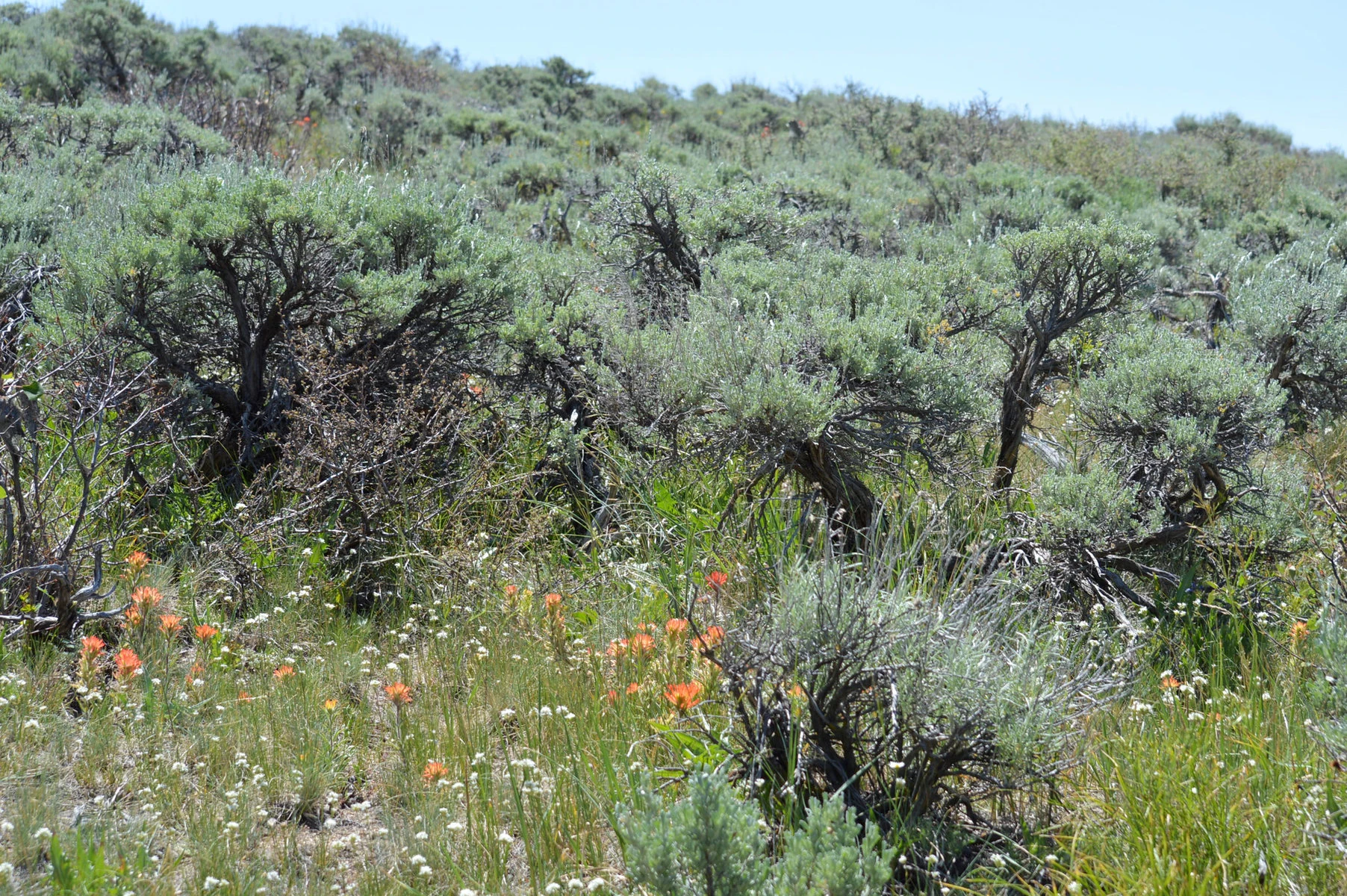
“I wasn’t happy about being in an insect class,” he says. “And then it turned out that it was one of the most interesting classes I ever took.” Thanks to that class, and to the years he then spent working with that professor, Curran came to see insects as the overlooked linchpin of the ecosystems he studied.
Even then, he didn’t plan on devoting much of his life to insects. His love of native plants was what led him to enroll in an ecological restoration program at the University of Wyoming in 2010. It was his knowledge of insects, however, that helped keep him there for a decade as he worked toward his PhD.
Soon after he began his graduate program, Curran found himself in the middle of an unfolding crisis. The sagebrush sea, a fragile ecosystem stretching from Arizona to Montana and from California to Colorado, was disappearing. And the greater sage grouse, a chicken-sized bird loosely resembling the turkey collages that young children make around Thanksgiving, was on the brink of being added to the endangered species list.
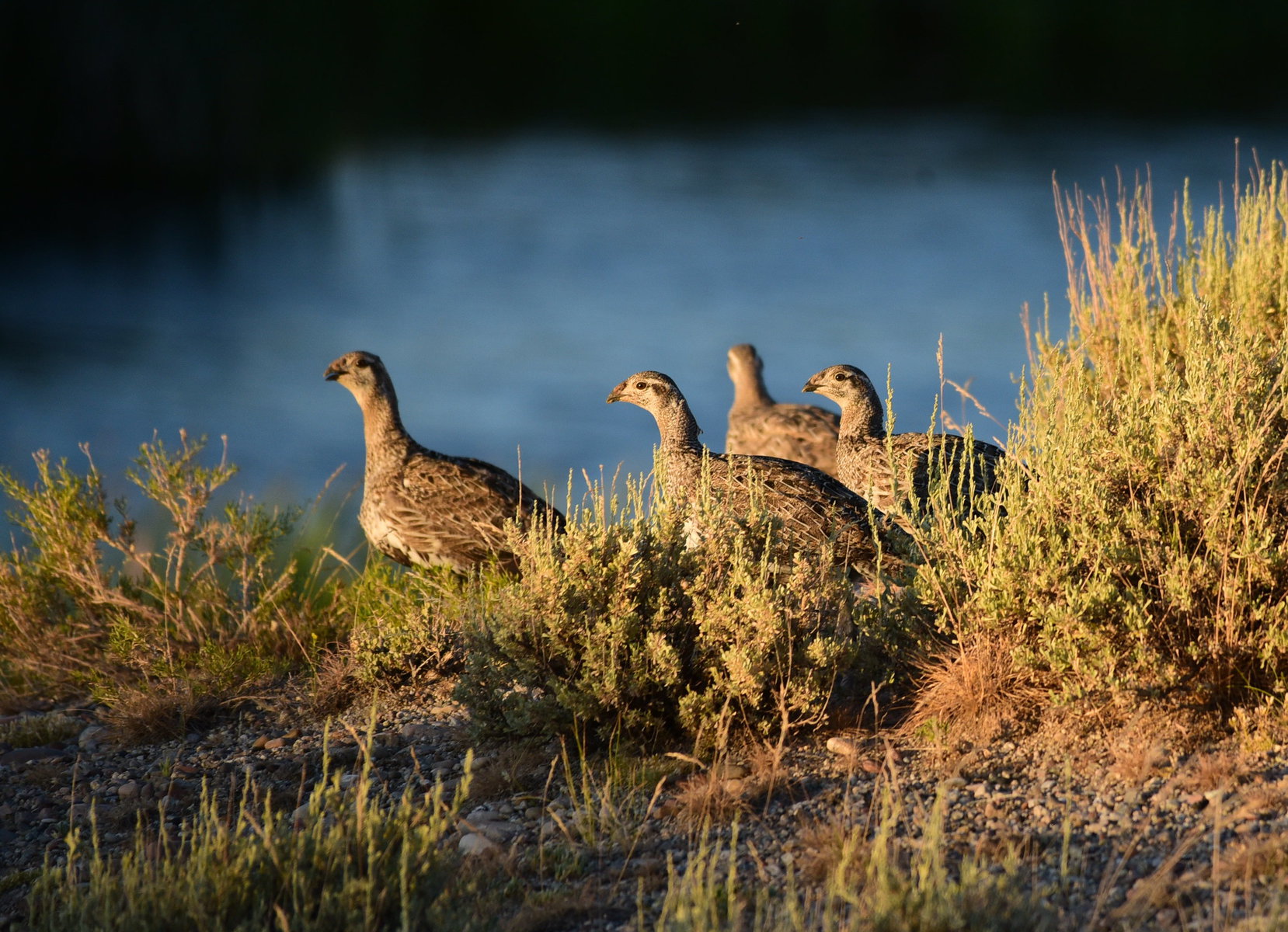
State officials and private energy companies were scrambling to find a way to reverse the species’ decline without the federal government having to intervene. Aided by researchers, they came up with a conservation strategy that hinged on designating core sage grouse habitat and limiting human activity there.
Curran was the one who realized how crucial insects would be in achieving it. A decade later, he’s still adding new pieces to the puzzle.
Wyoming is home to more than a third of the world’s surviving greater sage grouse. The imperiled sagebrush ecosystem — the only place where the species is found — stretches across most of the state. It has fared better in Wyoming than in most other places: Nationally, an estimated 2,000 square miles of the iconic landscape have succumbed each year of the past two decades to human incursions, invasive species and the ever-intensifying droughts and wildfires brought on by climate change.
But sage grouse populations tend to fluctuate with the health of the ecosystem as a whole, and even Wyoming has struggled to improve its sage grouse numbers.
Protecting healthy sagebrush benefits the greater sage grouse and hundreds of other species of wildlife.
Though the parched, windswept landscape is inhospitable to humans and most other species, it is rich in hydrocarbons and renewable resources, making it attractive to all kinds of energy development. Wyoming’s oil and gas companies are not only active there but also highly transient, continually drilling new wells and closing off old ones. As a result, for as long as they’re operating in areas inhabited by sage grouse, oil and gas companies’ decisions about land restoration will have a significant impact on the species.
Curran began his research in Wyoming in the early 2010s by creating a database of what, exactly, oil and gas companies were doing when it came time to reclaim their well pads. Though the industry was required to reseed disturbed areas using native plants, companies employed a patchwork of methods with wide-ranging outcomes.
Crushed by negative news?
Sign up for the Reasons to be Cheerful newsletter.“I was tracking all the seed mixes and soil amendments, any sort of herbicide applications or fertilizers, or any sort of soil handling,” Curran says. “Anything that would be considered a reclamation practice.”
His goal, he says, was to gather enough data to “have the magic button to say, ‘This is how we do good reclamation in Wyoming.’” But the reality wasn’t that simple. Companies differed not only in the techniques they used, but in how they documented them, and the results were all over the map. Which meant a database alone wasn’t going to cut it.
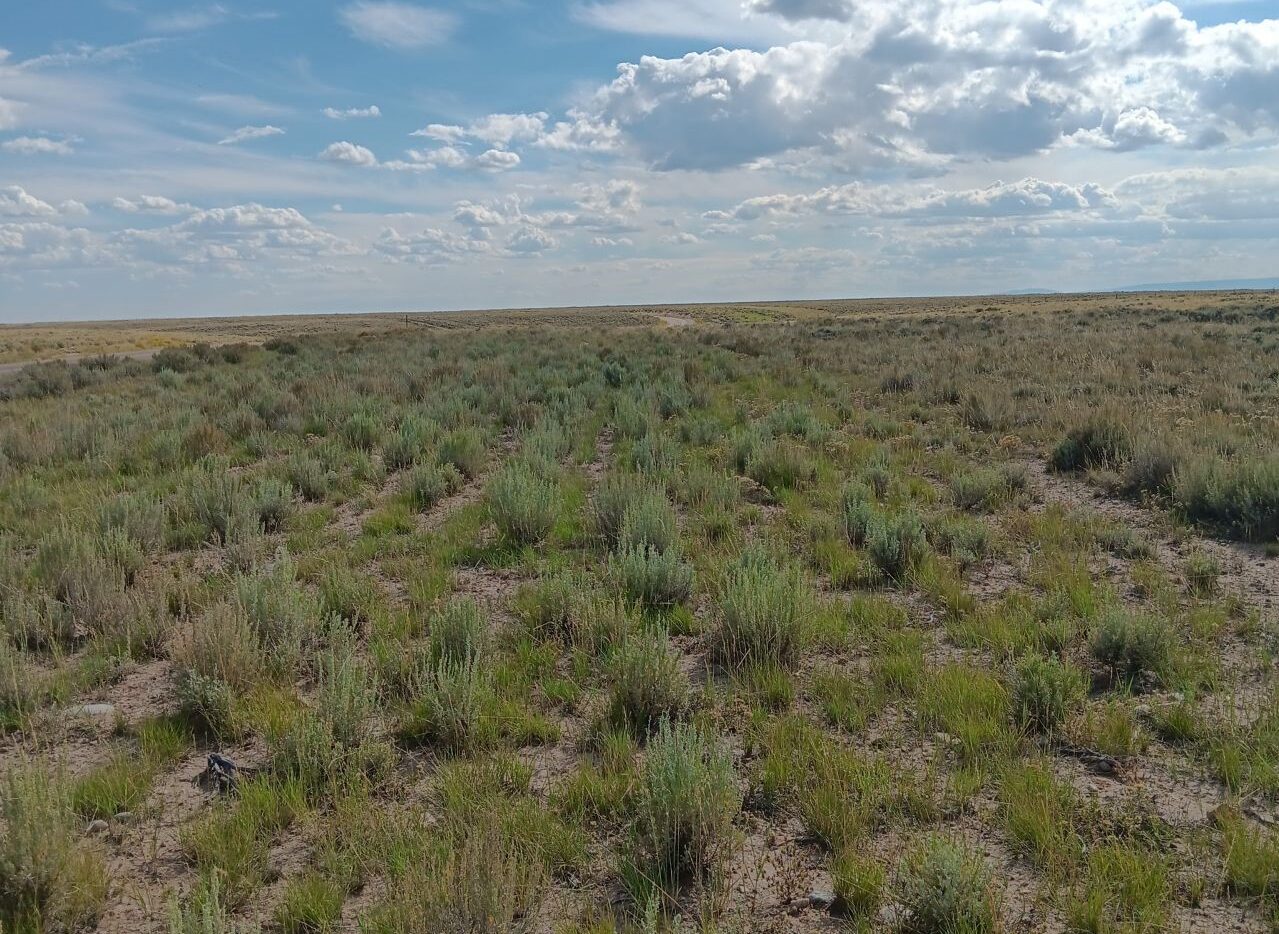
So Curran started trying to standardize the way companies collected and reported their data. “A couple of companies started adopting that methodology,” he says. “That became the first chapter of my dissertation.”
He soon learned, too, that there were people already having a lot of success reclaiming well pads in Wyoming. Their methods worked. But even though all of the state’s oil and gas companies were required to reclaim their wells when production ceased, few knew how to get it right.
When Curran — by this point nearing the end of his PhD — showed up to a western Wyoming gas field armed with two coolers, a sweep net and hundreds of Ziploc bags, the site’s operators didn’t know what to think. The company had given money to the university to support Curran’s research. It had expected something more sophisticated than plucking insects off plants and stuffing them into bags.
But Curran was onto something. The companies that achieved the most successful regrowth often planted native annual species instead of trying to immediately reestablish the sagebrush. That “assisted succession,” he says, helps to trap moisture and stabilize the soil, creating more favorable growing conditions for sagebrush.
By the end of his first day in the field, Curran had proved his hunch. Because of the time he’d spent studying insects as an undergraduate, Curran understood just how crucial insects were in terrestrial ecosystems — and he knew that insect abundance could serve as an indicator for how well those ecosystems were functioning.
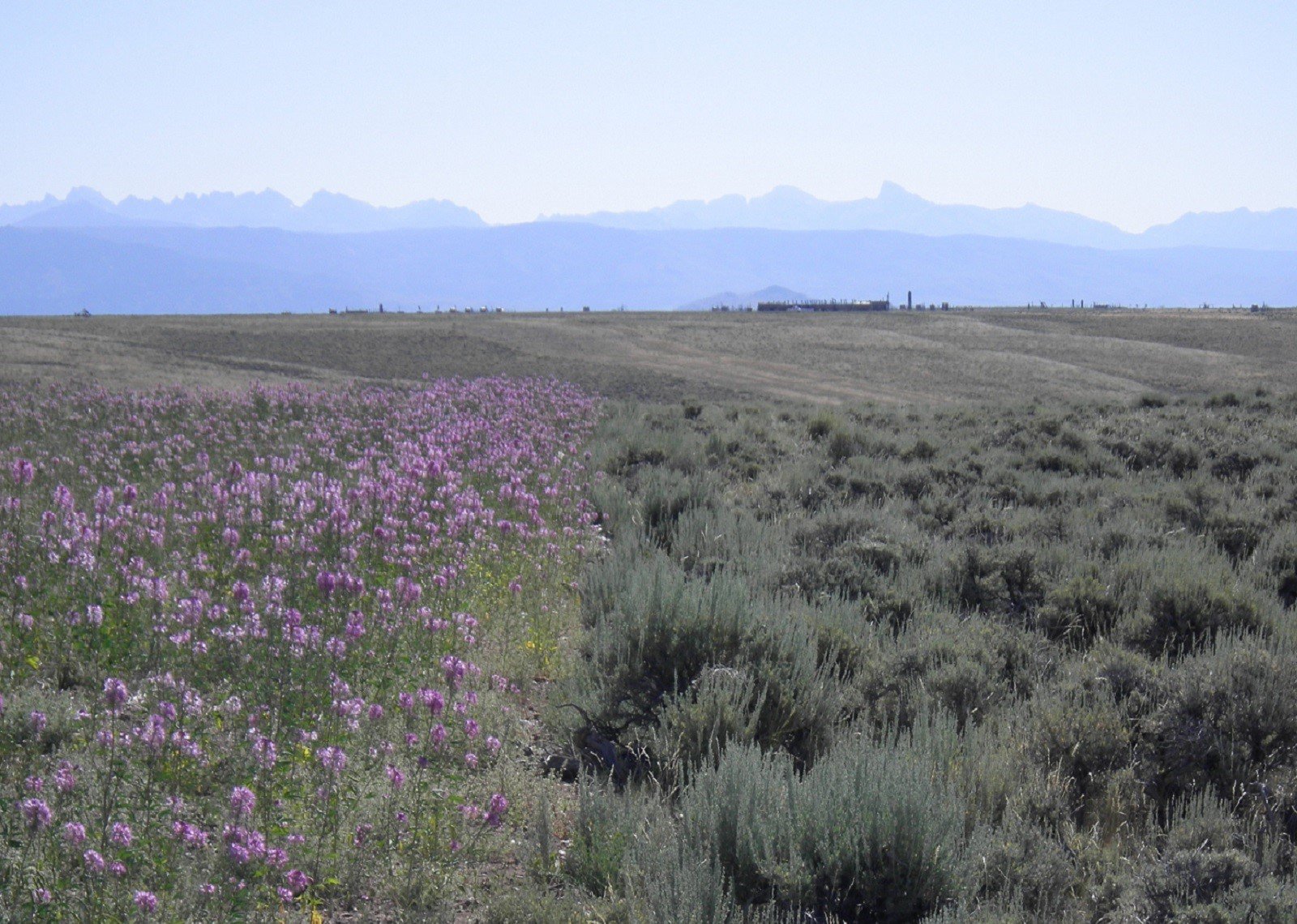
“If we took humans off the Earth,” he says, “the Earth would go on and probably not really miss us. Where if you took all the insects away … the whole food web would collapse.”
Sure enough, the sites that had been restored effectively were able to support way larger insect populations than the undisturbed sagebrush nearby.
Curran published a pair of peer-reviewed studies in 2022 detailing some of his results. He’d found up to a dozen times more insects on well pads reclaimed with a native annual flower, the Rocky Mountain bee plant, and up to four times more insects on well pads reclaimed with native grasses compared with reference areas. He’d identified a wider variety of insects on reclaimed well pads than reference areas. And he’d observed that all of these trends persisted across the entire growing season.
It took Curran a while to convince companies of the value of his work. Eventually, though, they started to listen. Over the past couple of years, some have begun to approach him. One conversation at a conference in 2022 turned into a project funded jointly by a Wyoming oil and gas producer and a major pipeline company.
The companies asked him to identify the things that were working and troubleshoot what wasn’t. He measured insect abundance, evaluated how the companies handled their soil and created a data system where they could log everything in the future. The goal, Curran said, was to do “a holistic dive into their reclamation practices.” Based on the numbers he crunched this fall, they’re already getting a lot right.
In his research, Curran has found up to a dozen times more insects on well pads reclaimed with the Rocky Mountain bee plant, a native annual plant.
So far, Curran has partnered mostly with oil and gas companies. But he hopes that his work will ultimately give rise to restoration practices that are more consistent — and more effective — at other types of industrial sites, in the aftermath of natural disasters and even in places where existing habitat is being improved.
Curran arrived in Wyoming at precisely the right moment, when the state had the desire to deepen its knowledge of sage grouse and the funds to make it happen, says Nyssa Whitford, the Wyoming Game and Fish Department’s sage grouse biologist.


Become a sustaining member today!
Join the Reasons to be Cheerful community by supporting our nonprofit publication and giving what you can.
JoinHis work “is going to make sure that we’re not relearning reclamation every time we do it,” Whitford says. “We can … learn from what is working, and then keep replicating that, so we’re not reinventing the wheel each time we go out.”
Earlier this year, the Game and Fish Department gave Curran $20,000 to sift — with the help of an intern — through all the research done since 1930 on what sage grouse eat. (In the 20th century, unlike today, it was still legal to dissect the birds to study them.) Much of that work was never published, making it difficult for wildlife managers to reference.
Curran plans to use the grant to create a centralized source of information about the species’ diet. His hope is that it will enable restoration projects to incorporate plants that will attract the right insects, which will then attract sage grouse. If that happens, he says, it “will be a big leap in reclamation and habitat restoration efforts out in the Western states.” Because anywhere the conditions are right for sage grouse to thrive, there’s a good chance the rest of the ecosystem will be prospering, too.
The post Counting Bugs to Save Birds appeared first on Reasons to be Cheerful.
Mold Course
Article URL: https://www.epa.gov/mold/mold-course-introduction
Comments URL: https://news.ycombinator.com/item?id=38543229
Points: 399
# Comments: 170
He Was Diagnosed With Lyme Disease. Why Did the Treatment Have No Effect?
Brain Implants Helped 5 People Recover From Traumatic Injuries
Things you're allowed to do (2020)
Article URL: https://milan.cvitkovic.net/writing/things_youre_allowed_to_do/
Comments URL: https://news.ycombinator.com/item?id=38399740
Points: 393
# Comments: 209
New Gene Editing Treatment Cuts Dangerous Cholesterol in Small Study
Why Vultures Might Just Be the Smartest Birds Above the Block
Linear Algebra Done Right – 4th Edition
Article URL: https://linear.axler.net
Comments URL: https://news.ycombinator.com/item?id=38060159
Points: 618
# Comments: 289
Lessons Learned from Twenty Years of Site Reliability Engineering
Article URL: https://sre.google/resources/practices-and-processes/twenty-years-of-sre-lessons-learned/
Comments URL: https://news.ycombinator.com/item?id=38037141
Points: 584
# Comments: 121











